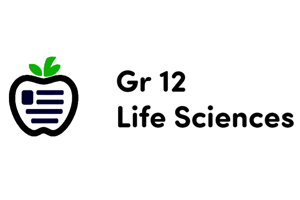Podcast
Questions and Answers
Which of the following statements accurately describes the purpose of pedigree diagrams in genetic studies?
Which of the following statements accurately describes the purpose of pedigree diagrams in genetic studies?
- To measure the rate of mutations in a population.
- To trace the inheritance patterns of traits across generations. (correct)
- To identify the specific DNA sequence of a gene.
- To illustrate the process of meiosis and mitosis.
In a pedigree diagram, shaded symbols always indicate individuals who carry a recessive allele but do not express the trait.
In a pedigree diagram, shaded symbols always indicate individuals who carry a recessive allele but do not express the trait.
False (B)
What is the significance of crossing over during meiosis?
What is the significance of crossing over during meiosis?
increasing genetic diversity
During meiosis, homologous chromosomes are separated in Meiosis ______, while sister chromatids are separated in Meiosis ______.
During meiosis, homologous chromosomes are separated in Meiosis ______, while sister chromatids are separated in Meiosis ______.
Which process contributes to genetic variation by randomly distributing maternal and paternal chromosomes into daughter cells during meiosis?
Which process contributes to genetic variation by randomly distributing maternal and paternal chromosomes into daughter cells during meiosis?
Mitosis results in daughter cells with half the number of chromosomes as the parent cell.
Mitosis results in daughter cells with half the number of chromosomes as the parent cell.
Which of the following is a primary purpose of mitosis in multicellular organisms?
Which of the following is a primary purpose of mitosis in multicellular organisms?
Match the following terms with their descriptions.
Match the following terms with their descriptions.
During which phase of mitosis do sister chromatids separate and move to opposite poles of the cell?
During which phase of mitosis do sister chromatids separate and move to opposite poles of the cell?
Meiosis results in two genetically identical diploid cells.
Meiosis results in two genetically identical diploid cells.
What is the name given to the division of the cytoplasm at the end of mitosis?
What is the name given to the division of the cytoplasm at the end of mitosis?
During prophase, the chromosomes ______ and the nuclear envelope breaks down.
During prophase, the chromosomes ______ and the nuclear envelope breaks down.
Match the following types of natural selection with their description:
Match the following types of natural selection with their description:
Which of the following is a key difference between meiosis and mitosis?
Which of the following is a key difference between meiosis and mitosis?
Natural selection acts directly on genotypes rather than phenotypes.
Natural selection acts directly on genotypes rather than phenotypes.
What is the term for the type of natural selection where individuals with intermediate phenotypes are favored?
What is the term for the type of natural selection where individuals with intermediate phenotypes are favored?
Natural selection leads to the ______ of populations to their environment over time.
Natural selection leads to the ______ of populations to their environment over time.
Which of the following statements best describes the role of variation in natural selection?
Which of the following statements best describes the role of variation in natural selection?
Flashcards
Biology
Biology
The study of life and living organisms, including their structure, function, growth, origin, evolution, and distribution.
Pedigree Diagrams
Pedigree Diagrams
Charts showing trait inheritance across family generations using standard symbols.
Circles (in pedigrees)
Circles (in pedigrees)
Represents females in a pedigree diagram.
Squares (in pedigrees)
Squares (in pedigrees)
Signup and view all the flashcards
Meiosis
Meiosis
Signup and view all the flashcards
Crossing Over
Crossing Over
Signup and view all the flashcards
Mitosis
Mitosis
Signup and view all the flashcards
Mitosis phases
Mitosis phases
Signup and view all the flashcards
Prophase
Prophase
Signup and view all the flashcards
Metaphase
Metaphase
Signup and view all the flashcards
Anaphase
Anaphase
Signup and view all the flashcards
Telophase
Telophase
Signup and view all the flashcards
Cytokinesis
Cytokinesis
Signup and view all the flashcards
Natural Selection
Natural Selection
Signup and view all the flashcards
Directional Selection
Directional Selection
Signup and view all the flashcards
Stabilizing Selection
Stabilizing Selection
Signup and view all the flashcards
Study Notes
- Biology is the study of life and living organisms.
- Biology explores the structure, function, growth, origin, evolution, and distribution of living things.
- It includes numerous sub-disciplines, such as anatomy, physiology, genetics, ecology, and more.
Pedigree Diagrams
- Pedigree diagrams are charts that show the inheritance of traits over multiple generations of a family.
- They use standardized symbols to represent individuals and their relationships, allowing geneticists to trace the transmission of specific genes or traits.
- Circles typically represent females, and squares represent males.
- Shaded symbols indicate individuals who express the trait being studied, while unshaded symbols represent individuals who do not express the trait.
- Horizontal lines connect parents, and vertical lines connect parents to their offspring.
- Pedigree diagrams are essential tools for studying inherited diseases or conditions.
- They can help determine the mode of inheritance (e.g., autosomal dominant, autosomal recessive, X-linked) of a trait.
- By analyzing the patterns of inheritance, genetic counselors can assess the risk of a particular trait appearing in future generations.
Meiosis
- Meiosis is a type of cell division that reduces the number of chromosomes in a cell by half, producing four haploid cells.
- It is essential for sexual reproduction, as it generates gametes (sperm and egg cells) with half the number of chromosomes as the parent cell.
- Meiosis involves two rounds of cell division: Meiosis I and Meiosis II.
- Meiosis I separates homologous chromosomes, while Meiosis II separates sister chromatids.
- During Prophase I, homologous chromosomes pair up and exchange genetic material through a process called crossing over, increasing genetic diversity.
- Independent assortment of chromosomes during Meiosis I further contributes to genetic variation by randomly distributing maternal and paternal chromosomes into daughter cells.
- Meiosis ensures that the correct chromosome number is maintained during sexual reproduction.
- When two haploid gametes fuse during fertilization, the resulting zygote has the normal diploid number of chromosomes.
Mitosis
- Mitosis is a type of cell division that results in two daughter cells each having the same number and kind of chromosomes as the parent nucleus, typical of ordinary tissue growth.
- It is used for growth, repair, and asexual reproduction in organisms.
- Mitosis consists of several phases: prophase, metaphase, anaphase, and telophase.
- During prophase, the chromosomes condense, and the nuclear envelope breaks down.
- During metaphase, chromosomes line up along the metaphase plate.
- During anaphase, sister chromatids separate and move to opposite poles of the cell.
- During telophase, the chromosomes decondense, and a new nuclear envelope forms around each set of chromosomes.
- Cytokinesis, the division of the cytoplasm, typically occurs at the end of mitosis, resulting in two separate daughter cells.
Meiosis vs. Mitosis
- Meiosis produces four genetically different haploid cells, while mitosis produces two genetically identical diploid cells.
- Meiosis involves two rounds of cell division (Meiosis I and Meiosis II), while mitosis involves only one round of cell division.
- Crossing over occurs in meiosis but not in mitosis.
- Meiosis is involved in sexual reproduction, while mitosis is involved in growth, repair, and asexual reproduction.
- Meiosis reduces the chromosome number by half, while mitosis maintains the chromosome number.
Similarities of Meiosis and Mitosis
- Both meiosis and mitosis are types of cell division that involve a series of phases (prophase, metaphase, anaphase, and telophase).
- Both processes involve the separation of chromosomes.
- Both processes are essential for the survival and reproduction of organisms.
- Both are preceded by interphase, during which the cell grows and replicates its DNA.
- In both, the genetic material is duplicated
Natural Selection
- Natural selection is a mechanism of evolution in which organisms with traits better suited to their environment are more likely to survive and reproduce.
- It leads to the adaptation of populations to their environment over time.
- Variation exists within populations, and some of this variation is heritable.
- Organisms produce more offspring than the environment can support, leading to a struggle for survival.
- Individuals with advantageous traits are more likely to survive and reproduce, passing those traits on to their offspring.
- Over time, the frequency of advantageous traits increases in the population, leading to evolutionary change.
- Natural selection acts on phenotypes (observable characteristics) rather than genotypes (genetic makeup).
- It can lead to the formation of new species through a process called speciation.
Types of Natural Selection
- There are several types of natural selection, including directional selection, stabilizing selection, and disruptive selection.
- Directional selection favors individuals at one extreme of a phenotypic range, causing a shift in the population's trait distribution in one direction.
- Stabilizing selection favors individuals with intermediate phenotypes, reducing variation and maintaining the status quo.
- Disruptive selection favors individuals at both extremes of a phenotypic range, leading to increased variation and potentially the formation of two distinct groups within the population.
- Sexual selection is a type of natural selection in which individuals with certain traits are more likely to attract mates and reproduce.
- Balancing selection maintains multiple alleles in a population, such as heterozygote advantage, where heterozygous individuals have higher fitness than homozygous individuals.
Studying That Suits You
Use AI to generate personalized quizzes and flashcards to suit your learning preferences.
Description
Explore pedigree diagrams, essential charts in biology that trace inherited traits across generations. Learn about standardized symbols representing individuals and their relationships. Discover how these diagrams aid in studying inherited diseases and determining inheritance modes.




